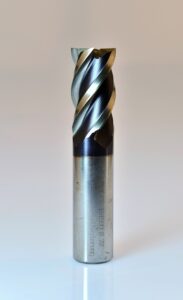When it comes to choosing a carbide end mill for your machining needs, there are several factors to consider to ensure you make the right decision. From the material you’re working with to the specific application, each aspect plays a crucial role in determining the ideal carbide end mill. Let’s delve into the key considerations to help you make an informed choice.
One of the first things to consider is the material you’ll be machining. Carbide end mills are known for their exceptional hardness and wear resistance, making them perfect for cutting tough materials like stainless steel, titanium, and hardened steels. However, different materials have their specific requirements. For instance, when working with aluminum, a carbide end mill with a high helix angle and sharp cutting edges would be ideal to prevent chip buildup. On the other hand, when machining stainless steel, a carbide end mill with a higher number of flutes is preferred for improved chip evacuation.
Another crucial consideration is the type of cut you’ll be making. Different cuts require different carbide end mills. For example, if you’re looking for high-speed cutting and efficient material removal during roughing operations, a solid carbide end mill with a coarse pitch and a roughing geometry is an excellent choice. Conversely, when it comes to finishing operations, such as achieving smooth surface finishes, a carbide end mill with fewer flutes and a sharp cutting edge is preferable.
In addition to the material and type of cut, the stability of your machining setup is vital. If you have a long overhang or are working with deep cavities, a carbide end mill with a reduced neck diameter can provide the required rigidity and minimize deflection. This ensures accurate and precise machining while avoiding any potential vibration issues.
Furthermore, considering the desired surface finish can influence your choice of carbide end mill. If you’re aiming for a polished finish, a carbide end mill with a higher helix angle and a polished flute can greatly reduce the risk of chatter and leave a smoother surface. On the other hand, if you’re looking for increased productivity and chip evacuation, a carbide end mill with variable helix angles can be beneficial.
When selecting a carbide end mill, it’s important to analyze the specific features and advantages that customers often seek. For instance, some end mills come with a specialized coating, such as TiAlN or TiSiN, which enhances durability and prolongs tool life. These coatings reduce friction and help dissipate heat during cutting, enabling faster speeds and feeds without compromising on tool integrity.
Moreover, the application areas for carbide end mills are vast and diverse. From aerospace to automotive industries, these tools are used for various purposes such as milling, drilling, and contouring. Whether you’re shaping complex engine parts, creating intricate molds, or fabricating custom prototypes, a well-chosen carbide end mill can make all the difference in achieving precision and efficiency.
Choosing the right carbide end mill is crucial for successful machining operations. By considering the material, type of cut, stability, desired surface finish, and special features, you can identify the ideal tool for your specific needs. The versatility and durability of carbide end mills make them an indispensable tool for a wide range of applications in diverse industries. So, make your choice wisely and experience the difference a high-quality carbide end mill can make in your machining projects.

